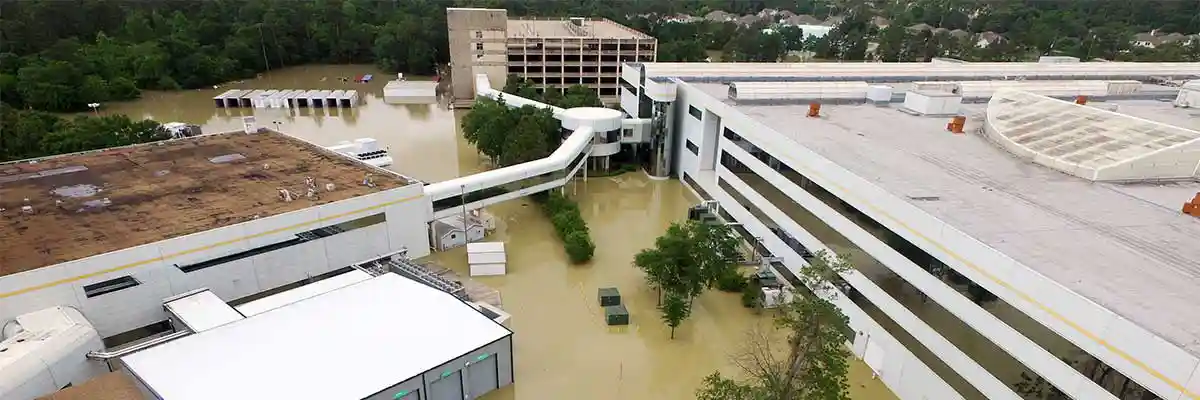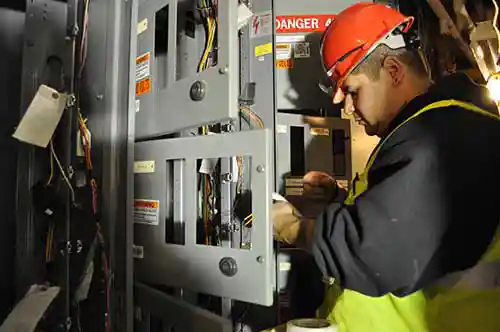Flood Damage Cleanup Services
Few things can make a property owner feel more helpless than the risk of an external flood and the potential damage caused. If your home or business is affected by a flood, it’s vitally important that you take quick action to minimize the damage and ensure the property is made safe once again.
When it comes to flood damage, it’s important to remember that there are numerous potential health hazards. Flood water, often known as Category 3 or "black water," can contain many contaminants and, as a result, any cleanup is best handled by a professional team. This initial flood damage must also be repaired and restored as quickly as possible in order to minimize the overall damage caused.

Flood Restoration In The Immediate Aftermath
From the moment your property is affected by flood water, you should act swiftly to minimize the potential lasting effects of this flood damage. Flood restoration is the process of removing the water, decontaminating the property, and making it safe for repairs. There are several steps you can take in the aftermath of a flood to limit the risks:
- Before flood waters hit, should you be afforded the time, try to move any furniture and valuable possessions from the ground. This will reduce the chances of them being irreparably damaged by flood waters.
- Due to the number of contaminants in flood water, ensure that everyone leaves the property and seeks safe refuge. Flood water can be hazardous and there’s a high risk of it making you sick.
- If it’s safe to do so, try to turn off electricity and gas. This will limit the risk of gas leaks or electrical charges in the water.
It’s important that all work carried out on a building after a flood is done by professionals who understand the damage that flood water can cause to property and have the tools to carry out full repair and restoration.

Flood Damage Restoration Process
Once the flood waters have begun to recede from your property, a professional clean up team like BELFOR will be able to begin the flood damage restoration process. There are several steps that will be followed in order to fully restore your property:
- Pump out any water and assess the damage left by the flooding.
- Safely remove and dispose of any furnishings and contents that are damaged beyond repair.
- Clean and decontaminate the building to remove any potential environmental, chemical, and/or biological contaminants left by the flood water.
- Check the building for any structural damage that could cause potential hazards either now or in the future.
- The property will be completely dried and dehumidified to ensure that no residual water remains – if left untreated, this could lead to further damage including a build-up of mold.
It’s also a good idea to have a plumber, electrician, and gas engineer check each of these services before resuming normal use. Floods have the potential to cause severe disruption to all utilities, so it’s best to be safe before continuing use.
Flood Damage FAQs
How Can Flood Damage Be Reduced?
Preparation is much easier than repair when it comes to reducing flood damage. Ensuring you take both short-term and long-term steps beforehand to reduce the risk of flood damage could provide vital protection if a flood were ever to happen. Short-term preparations are the things you can do when the potential for flooding is imminent, while long-term preparations are the more permanent changes you can make before any bad weather is in sight.
In the short-term, taking steps such as moving belongings from the main level to upstairs rooms, raising furniture off the floor, and using sandbags to block flood water entry points can be effective in minimizing damage. Long-term flood reduction measures can include improving land grading or slope, changing landscaping, installing water barriers and new drainage systems. Our Flood Preparedness page provides many more tips on staying safe.
What Constitutes Flood Damage?
Flooding is the most common type of natural disaster in the United States, and it is most widely defined as any time there is a temporary overflow of water onto land that’s normally dry. Flooding can be caused by rain, snow, coastal storms, storm surges, and overflows of dams and other water systems.
"Flood damage" as a term is more officially used in the insurance industry, especially when describing what is and isn’t covered on an insurance policy. When used in an insurance context, flood damage almost always refers to flooding caused by external water sources (as above) and not internal things such as a burst pipe or broken water heater. As part of your preparedness efforts, it’s best to talk to your insurance provider to make sure you know what qualifies as flood damage under your specific policy.
How to Deal with Flood Damage
When dealing with serious flood damage on your property, the best and safest option is always to contact professional help. Between waste contamination, possible interaction with electricity, and other hidden hazards, flood water can be dangerous and cause a lot of damage that’s both obvious and not so obvious to the human eye. Proper drying, decontamination, and dehumidification is necessary to ensure no further damage is caused to your property. If you live in an area prone to flooding, making sure you have flood insurance, in addition to homeowners insurance, can also help significantly when it comes to dealing with flood damage.

Post-Flood Damage Repair and Future Prevention
Getting your property back to its original state after a flood can be a long and difficult process, but with the help of a professional team it can be done and your home or business can be back up and running in no time.
Once the cleaning and drying part of the flood damage restoration has been completed, it might be time to look at putting measures in place to avoid flooding in the future. This can include various methods, such as the installation of new drainage systems and waterproof membranes on the floor and walls. This type of installation can be useful, although it wouldn’t necessarily help in the event of a hurricane or river flood.
After your property has been affected by flood waters, it’s important to keep an eye out for any potential long-term issues. Mold is a sign of moisture within a property, so recognizing the signs of this is important. Our mold damage section will tell you everything you need to know.
If you’ve been affected by flood damage, get in touch with BELFOR about our professional water damage cleanup and services.

